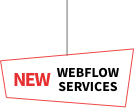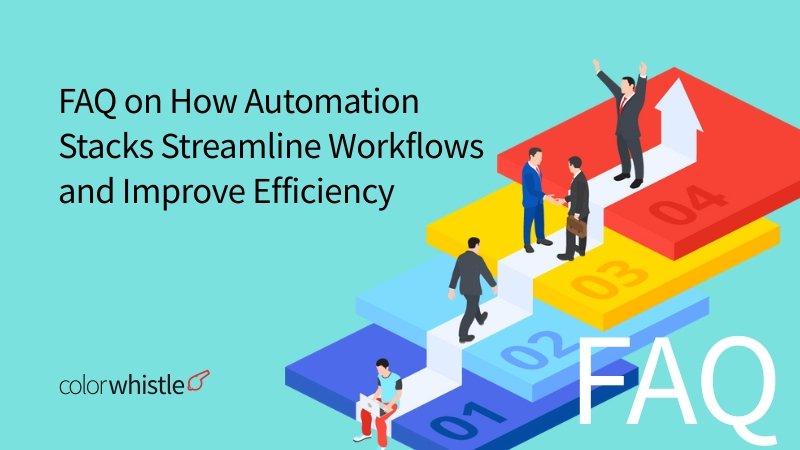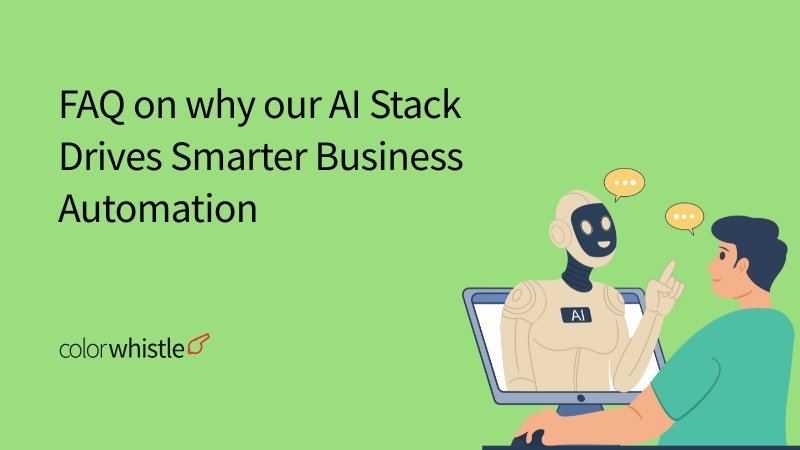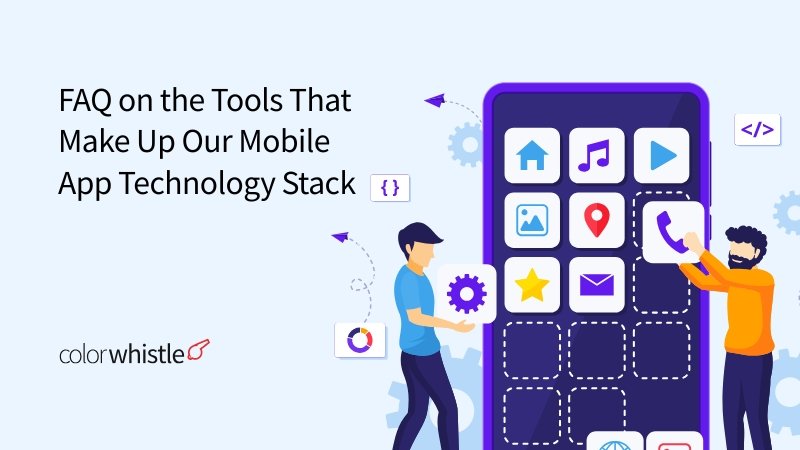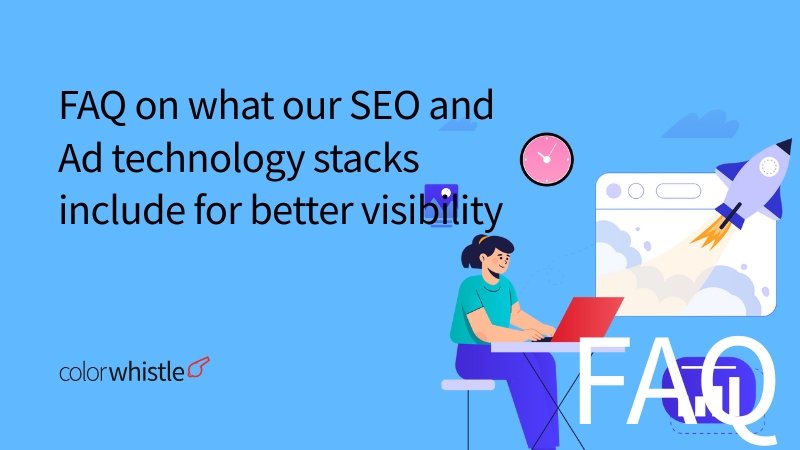Modern business operations demand speed, precision, and consistency, qualities that manual processes struggle to deliver at scale. Automation technology stacks have emerged as the backbone of efficient organizations, transforming how teams handle everything from routine data entry to complex cross-departmental workflows.
The impact of implementing the right productivity tools for businesses extends far beyond simple time savings. Automated systems eliminate human error in repetitive tasks, accelerate process completion times from hours to minutes, and ensure accuracy levels that manual operations cannot match. For instance, when a sales lead enters your CRM, automation can instantly trigger welcome emails, assign tasks to team members, update dashboards, and log activities, all without human intervention.
At ColorWhistle, we’ve developed a comprehensive approach to streamline business workflows through carefully selected automation tools that work in harmony. Our automation technology stack combines industry-leading platforms like Zapier, Make (Integromat), HubSpot Automation, UiPath, and Microsoft Power Automate, integrated with real-time monitoring systems including Slack notifications and custom dashboards.
This FAQ with Tech Stack guide explores how these interconnected tools create seamless operational efficiency, addressing common questions about implementation, scalability, security, and industry-specific applications. Whether you’re managing a growing startup or an established enterprise, understanding automation’s role in modern workflows is essential for maintaining competitive advantage.
For example, we assisted Mizzen+Main in leveraging Shopify POS to connect their online and offline stores. This not only improved customer experiences but also contributed significantly to their growth in the menswear sector.
Moreover, our expertise isn’t limited to just automation. We also provide insights into building mobile apps for your business needs or offer a comprehensive Shopify store redesign checklist aimed at increasing conversions and boosting sales.
Furthermore, with the rising popularity of Flutter apps due to their versatility and performance efficiency, we share five reasons why Flutter app development matters. Our experienced Flutter developers are equipped to create customized solutions tailored to meet specific business needs.
ColorWhistle’s Comprehensive Automation Stack
ColorWhistle’s automation technology stack is a collection of the best workflow automation tools available, carefully chosen to meet various operational needs. This system combines several specialized platforms, each selected for its specific strengths in managing different aspects of business process automation.
Workflow Automation Platforms
The backbone of the ColorWhistle automation stack consists of three powerful workflow automation engines:
Zapier – Connects over 5,000 applications through intuitive trigger-action sequences, enabling rapid deployment of automated workflows without coding requirements
Make (formerly Integromat) – Provides advanced visual workflow design with complex conditional logic, data transformation capabilities, and multi-step automation scenarios
HubSpot Automation – Delivers sophisticated marketing automation, lead nurturing sequences, and customer relationship management workflows integrated directly within the CRM environment
Process Automation Solutions
For more complex, enterprise-grade automation requirements, ColorWhistle uses strong process optimization technologies:
- UiPath – Handles robotic process automation (RPA) for tasks requiring interaction with legacy systems, desktop applications, and structured data processing
- Microsoft Power Automate – Integrates seamlessly with Microsoft 365 ecosystem, enabling automated document processing, approval workflows, and cross-application data synchronization
Monitoring and Alert Systems
The productivity tools for businesses go beyond just executing tasks; they also include extensive monitoring features. Slack integrations provide real-time notifications for workflow events, system alerts, and process completions directly to relevant team channels. Custom dashboards gather performance metrics, execution logs, and system health indicators to give stakeholders immediate insight into how well the automation is performing.
This multi-layered strategy ensures that organizations can streamline business workflows in every area of their operations, from simple task automation to intricate coordination between multiple systems, while keeping full control over all automated processes.
How ColorWhistle’s Automation Stack Streamlines Workflows
The ability to streamline business workflows lies at the heart of ColorWhistle’s automation philosophy. By deploying intelligent automation across critical business functions, organizations can reduce manual effort while achieving unprecedented levels of operational consistency.
Automating Repetitive Tasks
ColorWhistle’s automation stack targets the time-consuming activities that drain productivity from teams:
1. Notifications and Alerts
Automated notification systems ensure stakeholders receive timely updates without manual intervention. When a customer submits a support ticket, the system instantly routes alerts to the appropriate team members, logs the inquiry in the CRM, and triggers follow-up sequences based on predefined criteria.
2. Reporting and Analytics
Manual report generation becomes obsolete as the automation stack compiles data from multiple sources, formats it according to specifications, and delivers comprehensive reports on schedule. Sales teams receive daily performance dashboards, marketing departments access campaign metrics in real-time, and executives view consolidated business intelligence without requesting individual reports.
3. Data Entry and Synchronization
The stack eliminates duplicate data entry by synchronizing information across platforms automatically. When a lead fills out a contact form, their details populate the CRM, trigger email sequences in the marketing automation platform, and create tasks in project management tools, all without human intervention.
Unified System Integration
Process optimization technologies reach their full potential through seamless system integration. ColorWhistle’s approach connects disparate platforms into a cohesive ecosystem:
CRM Integration: Customer data flows bidirectionally between sales, support, and marketing platforms, maintaining a single source of truth
CMS Connectivity: Content updates trigger automated social media posts, email notifications, and analytics tracking
Marketing Tool Synchronization: Campaign data, lead scores, and engagement metrics sync across platforms, enabling coordinated multi-channel strategies
This interconnected architecture ensures that actions in one system cascade appropriately throughout the entire technology stack, eliminating information silos and maintaining data consistency across all business operations.
Moreover, by leveraging scalable AI-powered MVPs, businesses can ensure seamless integration and growth while optimizing their processes through process automation. The importance of SEO for IT services companies cannot be overstated as it serves as a long-term marketing investment option for compounding growth returns. Additionally, innovative travel marketing campaigns can inspire businesses to elevate their marketing efforts. Finally, incorporating user-generated content in video marketing strategies can provide numerous advantages for businesses aiming for influential brand communication.
Improving Cross-Team Collaboration with Automation Stacks
Disconnected teams often struggle with communication gaps, missed deadlines, and duplicated efforts. ColorWhistle’s automation stack addresses these challenges by creating transparent, interconnected workflows that keep everyone aligned and accountable.
Automated Notifications and Task Assignments
The automation stack transforms how teams coordinate their work through intelligent notification systems and dynamic task routing:
Instant accountability mechanisms trigger when specific conditions are met. When a sales team member closes a deal in the CRM, the system automatically notifies the onboarding team, assigns relevant tasks, and updates project management tools like ClickUp or Jira. This eliminates the traditional bottleneck of waiting for manual handoffs between departments.
Context-rich alerts ensure team members receive only relevant information. Rather than flooding inboxes with generic updates, the automation stack filters notifications based on role, department, and project involvement. A developer receives technical deployment alerts through Slack, while marketing teams get campaign performance updates through their preferred channels.
Conditional task routing distributes workload intelligently across team members. When support tickets exceed a certain priority threshold, the system automatically escalates them to senior team members and notifies relevant stakeholders. This prevents tasks from falling through the cracks during busy periods.
Real-Time Dashboards for Cross-Departmental Visibility
Shared dashboards powered by workflow integration tools create a single source of truth across the organization. Custom-built interfaces pull data from multiple systems, CRM, project management platforms, marketing tools, and present unified metrics that matter to each department.
Sales teams view pipeline progression alongside marketing campaign performance. Development teams track sprint progress while monitoring support ticket volumes that might indicate product issues. Leadership accesses high-level KPIs without requesting manual reports from individual departments.
These real-time views eliminate the need for status meetings and email chains. Team members access current project states, resource allocation, and bottlenecks through automated dashboards that update continuously as work progresses. For instance, using Power BI’s features allows for sharing dashboards easily among team members for better collaboration.
Additionally, leveraging emerging technologies like the Metaverse can further enhance cross-team collaboration by providing immersive virtual environments for meetings and collaborative projects.
Scalability of ColorWhistle’s Automation Stack for Growing Businesses
Business growth requires technology that can adapt without needing complete system overhauls. ColorWhistle’s scalable automation stack solves this problem with its foundation built on modular components and API-driven architecture.
Modular Architecture for Flexible Expansion
The modular automation technology stack works like building blocks, where each component operates independently while still integrating smoothly with others. When a business needs to automate invoice processing, the system adds this workflow without disrupting existing automation for customer onboarding or inventory management. This architecture allows organizations to:
- Add new automation workflows as business needs change
- Replace or upgrade individual components without affecting the entire system
- Test automation strategies in separate environments before full implementation
- Customize automation depth based on specific departmental requirements
API-Driven Design for Universal Connectivity
With a focus on [API-first development](https://colorwhistle.com/api-development-guide), the automation stack connects with almost any business application. Whether integrating older systems or modern SaaS platforms, the API layer enables data exchange and process synchronization. For example, a retail company expanding from regional operations to national distribution can connect new warehouse management systems, regional CRM instances, and location-specific payment processors through standardized API connections.
Multi-Team and Geographic Support
Enterprise-grade automation capabilities extend across organizational boundaries. The stack manages:
Concurrent operations across marketing, sales, operations, and finance teams without performance degradation
Regional customization allowing different workflows for EMEA, APAC, and Americas operations while maintaining centralized oversight
Department-specific automation where HR processes run independently from supply chain workflows yet share relevant data when needed
Time zone-aware scheduling ensuring automated tasks execute during appropriate business hours for each region
The infrastructure scales vertically to handle increased transaction volumes and horizontally to accommodate new business units, making it suitable for startups planning rapid expansion and established enterprises managing complex, distributed operations.
In addition to these features, ColorWhistle also offers services such as website design and debunking common website development myths which can further assist businesses in their growth journey.
Ensuring Security and Reliability in Automated Processes with ColorWhistle’s Tech Stack
Secure workflow automation forms the foundation of ColorWhistle’s technical infrastructure. Every automated process undergoes rigorous security protocols to protect sensitive business data and maintain client trust. The architecture incorporates multiple layers of protection, from encrypted API connections to role-based access controls that limit system permissions based on user responsibilities.
GDPR-Compliant Data Handling
ColorWhistle implements GDPR-compliant automation practices across all workflow systems. Data processing activities adhere to strict privacy regulations through:
- Automated data retention policies that remove outdated information according to predefined schedules
- Consent management workflows that track and respect user preferences throughout the customer journey
- Data minimization protocols ensuring automated processes collect only necessary information
- Audit trail generation for complete transparency in data handling activities
The automation stack maintains detailed logs of all data processing events, enabling quick responses to data subject access requests and demonstrating compliance during audits.
Continuous Monitoring and Testing Protocols
Reliable process automation technologies require constant vigilance. ColorWhistle employs comprehensive monitoring systems that track automation performance in real-time:
Health check routines run at scheduled intervals to verify all integrations function correctly
Error detection algorithms identify anomalies and trigger immediate alerts through Slack channels
Performance metrics dashboards display response times, success rates, and resource utilization
Automated testing suites validate workflow logic before deploying changes to production environments
Backup and Recovery Strategies
The automation infrastructure includes redundant backup systems that protect against data loss and service interruptions. Automated snapshots capture system states at regular intervals, while failover mechanisms redirect processes to backup servers during outages. Recovery procedures restore operations within minutes, minimizing business disruption. Version control systems track all workflow configurations, allowing teams to roll back changes if issues arise.
In addition to these robust processes, ColorWhistle also extends its expertise into various sectors including education and fashion. For instance, our Education Digital Marketing Services are revolutionizing digital strategies in the education sector. Simultaneously, we provide YouTube lookbook strategies for fashion brands, enhancing visual storytelling and SEO for lasting video engagement and sales.
Industry-Specific Benefits of Workflow Automation Stacks by ColorWhistle
ColorWhistle’s comprehensive tech stack delivers targeted advantages across diverse business sectors, addressing unique operational challenges through intelligent automation. Each industry experiences distinct benefits aligned with its specific workflow requirements and regulatory demands.
E-Commerce Operations
Online retailers leverage automation to manage high-volume order processing, inventory synchronization across multiple channels, and customer communication workflows. Automated systems handle order confirmations, shipping notifications, and return processing while maintaining real-time inventory accuracy. The integration between payment gateways, fulfillment systems, and customer service platforms creates a seamless purchasing experience that scales during peak shopping periods.
SaaS Platform Management
Software-as-a-Service companies utilize automation for user onboarding sequences, subscription management, and customer success workflows. Automated provisioning systems create user accounts, assign appropriate access levels, and trigger educational content based on user behavior. Billing automation handles subscription renewals, payment failures, and upgrade notifications while maintaining accurate revenue recognition. For those looking to enhance their online presence, exploring top SaaS website designs can provide inspiration for cutting-edge trends and sleek interfaces. Furthermore, understanding the Total Addressable Market (TAM) can significantly aid in maximizing growth potential.
Healthcare Provider Systems
Medical facilities implement automation for appointment scheduling, patient intake documentation, and insurance verification processes. HIPAA-compliant workflows automate prescription refill requests, lab result notifications, and follow-up appointment reminders. The technology reduces administrative burden on medical staff while improving patient communication and care coordination.
Financial Services Automation
Banking and financial institutions deploy automated workflows for loan application processing, compliance documentation, and fraud detection alerts. Risk assessment procedures run automatically, triggering appropriate review protocols based on predefined criteria. Client onboarding processes complete faster through automated identity verification and document collection systems.
Marketing Agency Workflows
Digital marketing teams automate campaign reporting, client approval processes, and content distribution across multiple platforms. Social media scheduling, performance tracking, and lead nurturing sequences operate continuously without manual intervention. Client dashboards update automatically with campaign metrics, maintaining transparency and reducing reporting time by 70-80%.
Best Practices for Successful Implementation of Workflow Automation with ColorWhistle’s Tech Stack
Implementing successful workflow automation strategies requires a methodical approach that balances technical capabilities with business objectives. ColorWhistle’s methodology centers on precision mapping and strategic tool selection to maximize return on automation investments.
Identifying Automation Opportunities Through Data Analysis
The foundation of effective automation begins with comprehensive workflow auditing. ColorWhistle employs analytics-driven assessment techniques to pinpoint high-impact automation candidates:
- Task frequency analysis – Tracking how often specific activities occur across teams to calculate potential time savings
- Error rate monitoring – Identifying processes with high manual error rates that benefit from automated consistency
- Resource allocation mapping – Measuring staff hours consumed by routine tasks versus strategic initiatives
- Bottleneck identification – Locating workflow delays caused by manual handoffs between systems or departments
Data collected through time-tracking software, process mining tools, and employee surveys reveals patterns invisible to casual observation. Tasks consuming more than 2 hours weekly per employee and following predictable logic patterns typically deliver the strongest automation ROI.
Strategic Technology Platform Selection
Choosing the right automation tools demands alignment between technical capabilities and specific workflow requirements. ColorWhistle evaluates platforms across multiple dimensions:
- Integration compatibility – Ensuring seamless connectivity with existing CRM, ERP, and communication systems prevents data silos and maintains workflow continuity.
- Scalability architecture – Selecting platforms with API-first design and modular structures accommodates business growth without requiring complete system overhauls.
- AI-powered intelligence – Leveraging machine learning capabilities for predictive task routing, intelligent document processing, and adaptive workflow optimization enhances automation sophistication beyond simple rule-based triggers.
- User accessibility – Balancing powerful functionality with intuitive interfaces enables non-technical team members to manage and modify automated workflows independently.
ColorWhistle’s tech stack combines specialized tools, Zapier for quick integrations, UiPath for complex robotic process automation, and HubSpot for marketing workflow orchestration, creating a flexible ecosystem that adapts to diverse automation scenarios.
In addition, marketing automation can significantly improve efficiency in sectors like education by enhancing student engagement and recruitment strategies. Moreover, businesses in the travel sector can benefit from implementing mobile-friendly website designs which optimize user experience and boost engagement.
When it comes to staffing solutions during these transformative times, it’s crucial to understand the nuances between remote staffing and outsourcing, as each option has its own pros and cons depending on project needs. Lastly, if you’re looking to enhance your online presence in Canada, consider partnering with one of the best digital marketing agencies listed by ColorWhistle, they can help you make a significant mark in the digital world.
Future Trends in Automation Technology at ColorWhistle
The world of automation technologies is constantly changing, and ColorWhistle is dedicated to being a leader in these new developments. One major shift we’re seeing is the use of artificial intelligence (AI) in workflow automation, which allows businesses to be more proactive instead of just reactive.
How AI is Changing Workflow Automation
With AI-powered workflow automation tools like GoHighLevel CRM, traditional systems that rely on fixed rules are being transformed into intelligent platforms. These platforms have the ability to learn from patterns and anticipate future needs.
At ColorWhistle, we have plans to incorporate advanced machine learning algorithms into our services. These algorithms will analyze past workflow data to identify potential bottlenecks before they happen. As a result, teams will be able to allocate resources more efficiently and make real-time adjustments to their processes based on the insights gained.
Key Areas of Focus for ColorWhistle’s Integrated Systems Architecture
As part of our commitment to staying ahead in the automation industry, we are expanding our integrated systems architecture. This expansion will focus on three main areas:
Intelligent Process Mining: Using advanced analytics tools to automatically find ways to improve existing workflows and uncover hidden inefficiencies that manual analysis might overlook.
Natural Language Processing Integration: Implementing voice-activated commands and conversational interfaces that enable team members to start automated workflows using simple spoken instructions or chat-based interactions.
Hyper-Automation Frameworks: Combining robotic process automation with AI decision-making capabilities in order to handle increasingly complex business situations that previously required human judgment.
Ensuring Cutting-Edge Solutions for Our Clients
Our technical team at ColorWhistle actively evaluates new automation platforms and methods. This ensures that our clients can benefit from the latest solutions without having to worry about using untested technologies. We believe it is important not only to focus on individual tool capabilities but also on creating a cohesive ecosystem where different automation technologies can work together smoothly.
Creating Actionable Intelligence Loops with Automation and Analytics
We understand the importance of combining automation with advanced analytics platforms in order to create feedback loops that drive continuous improvement. Our automated systems will not only carry out tasks but also generate performance metrics that feed back into optimization algorithms. This self-improving infrastructure will adapt to changing business conditions, ensuring maximum efficiency as organizational needs evolve.
Leveraging UI/UX Trends for Enhanced User Experience
In addition, we recognize the significance of staying updated with the latest UI/UX trends in automotive websites. These trends have the potential to greatly enhance user experience and improve website performance. By continuously refining interconnected systems based on these trends, we aim to position our clients as strategic competitors who can leverage automation effectively.
Streamlining Processes with Google AI Features on Android Devices
Furthermore, we are excited about the potential impact of enhanced Google AI features on Android devices in streamlining processes. These features could provide smarter assistance, boost productivity levels, and create personalized interactions for users.
As these technologies continue evolving, ColorWhistle remains committed to being at the forefront of innovation. We strive towards delivering cutting-edge solutions that empower our clients’ success through effective use of automation strategies.
Conclusion
ColorWhistle’s comprehensive tech stack demonstrates how businesses can streamline workflows with tailored workflow automation stacks that address real operational challenges. The integration of tools like Zapier, Make, HubSpot Automation, UiPath, and Microsoft Power Automate creates a robust foundation for organizations seeking to improve business efficiency through technology.
The modular architecture ensures scalability for businesses at any growth stage, from startups to enterprise operations. Security remains paramount through GDPR-compliant data handling, encrypted API connections, and continuous monitoring protocols that protect sensitive information while maintaining operational reliability.
Cross-team collaboration flourishes when automated notifications, task assignments, and shared dashboards eliminate communication silos. Teams gain real-time visibility into project status, resource allocation, and performance metrics, enabling faster decision-making and improved accountability.
This FAQ with Tech Stack has explored how automation transforms manual processes into efficient, error-free workflows. From reducing repetitive data entry to integrating disparate systems, the right automation strategy delivers measurable improvements in productivity and accuracy.
Ready to transform your operations with intelligent automation?
ColorWhistle’s expertise in designing scalable, secure automation solutions can help your organization eliminate bottlenecks, accelerate processes, and unlock new levels of operational excellence. Let’s build your custom automation ecosystem today.
FAQs (Frequently Asked Questions)
What is the importance of automation in modern business operations?
Automation is crucial in modern business operations as it reduces manual effort, speeds up processes, and improves accuracy. By streamlining workflows with automation technology stacks like those offered by ColorWhistle, businesses can enhance productivity and optimize their processes efficiently.
What tools are included in ColorWhistle’s comprehensive automation stack?
ColorWhistle’s automation stack includes a variety of workflow automation tools such as Zapier, Make (Integromat), HubSpot Automation, UiPath, and Microsoft Power Automate. Additionally, it integrates monitoring and alerts systems like Slack notifications and custom dashboards to ensure seamless business process automation.
How does ColorWhistle’s automation stack streamline business workflows?
ColorWhistle’s automation stack automates repetitive tasks including notifications, reporting, and data entry by integrating multiple systems like CRM, CMS, and marketing tools. This integration creates seamless workflows that reduce manual effort and enhance overall process optimization technologies for businesses.
In what ways does automation improve cross-team collaboration?
Automation enhances cross-team collaboration by enabling automated notifications and task assignments that increase accountability across teams. Shared real-time dashboards provide visibility across departments, facilitating better communication and workflow integration tools that support collaborative efforts.
Is ColorWhistle’s automation stack scalable for growing businesses?
Yes, ColorWhistle’s automation stack features a modular architecture and API-driven design that allows easy expansion to new workflows. It supports multiple teams, departments, and geographic regions simultaneously, making it a scalable solution suitable for growing businesses seeking enterprise-grade automation.
How does ColorWhistle ensure security and reliability in its automated processes?
ColorWhistle ensures security and reliability through GDPR-compliant data handling practices within automated workflows. The tech stack incorporates continuous monitoring, rigorous testing routines, and backup strategies to maintain secure workflow automation and reliable process automation technologies.
